The environment you sell in is as important as the product or service you offer. To get it right, top businesses require the expertise of a user interface designer who ensures that customers have a satisfying and memorable experience for their brand’s touchpoints.
Since the advent of the digital age, the involvement of UI designers has been the deciding factor in whether a consumer will enjoy the full digital experience on your platform or choose another company over yours. And this has made them even more desirable.
Unfortunately, despite the fact that there is a growing need for UI designers and a rise in the number of professionals trooping into the field of UI design, finding the right candidate with the desired qualities hasn't become any simpler.
To help you with this, we have prepared this guide where we will take an in-depth look at the role of a user interface designer. Once you've finished reading it, you'll be aware of the core duties a UI designer should perform and the best places to look for them.
Let's take a deep dive.
What Is User Interface Design?
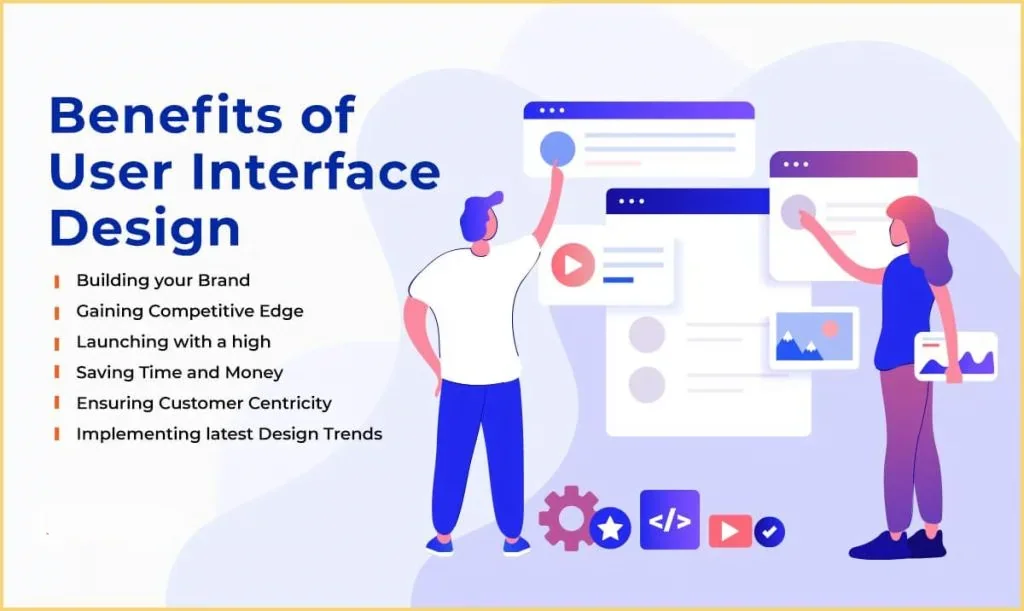
User interface design aims to streamline, maximize, and simplify usability and means users interact with computerized technology. Although UI design is often associated with visual aesthetics, it deals with more than just the looks of the product.
User interface design incorporates three important concepts to deliver a complete user experience. Let’s take a look at each one of them in greater detail.
A. Visual Design
Visual design focuses on the aesthetics of the interface. It aims to please the eye without compromising the usability or function of the interface. By successfully utilizing colors, texts, and images, a strategically designed user interface can build trust and increase accessibility.
Visual design is important since it is the first thing that attracts a user and is essential to retaining visitors to your website Therefore, certain design principles have to be in place to ensure its success. The basic principles to consider should be:
- Unity
- Scale
- Balance
- Contrast
B. Interaction Design
Interaction design aims to create user experiences that improve and extend the way customers communicate, interact, and work. It deals with supporting people by predicting patterns and behavior to provide solutions for user problems yet to be encountered. It also fixes any errors that have been identified with the product.
Essentially, the process of interaction design involves four primary components:
- Identifying pain points and establishing requirements
- Development of designs that address the pain points and requirements
- Building interactive versions of the designs to communicate and assess the requirements
- Evaluating what is built throughout the process
C. Information Architecture
In navigating an interface for the first time, a user would need a "guide". Information architecture itemizes, structures, and organizes content/information to aid users in their journey.
Information is constantly growing, making the role of information in UI design indispensable. Good information architecture helps users navigate through the road of information by pointing them in the right direction and helping them ignore what's irrelevant.
Difference Between UI And UX Design
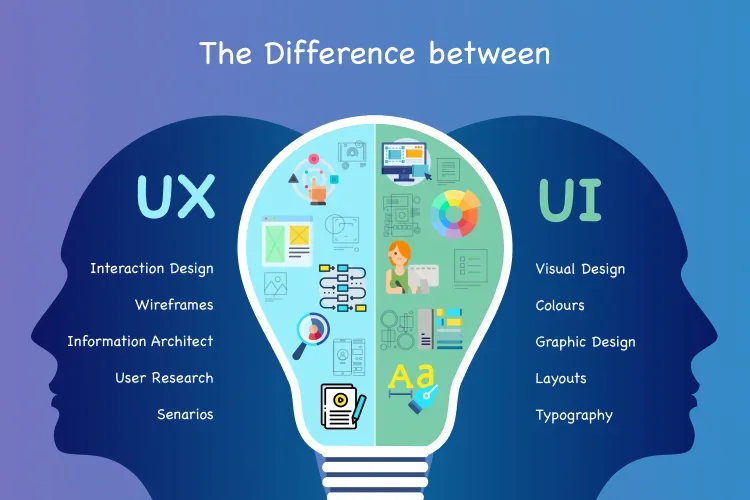
UI deals with how end-users visualize and interact with a product. Branding and personality are incorporated in the design to draw users into it, gaining their trust. As mentioned before, color theories, images, fonts, palettes, and formats are all handled in UI design.
On the other hand, user experience design deals with the feel of the product. Functionality, usefulness, relevance, and overall value of a product to the user fall within the realm of UX design. UX serves a more primary function in the sense that function comes before aesthetics. Irrespective of how appealing to the eyes a product is, its value is lost if it doesn't satisfy its primary function.
Oftentimes when searching for a user interface designer, professionals with the title of UI/UX designer or junior front-end developers come up. One would think that the roles are indistinguishable, but UI design, UX design, and front-end development are respective fields of their own. However, they work hand in glove in a collaborative environment and are integral in delivering a total user experience.
What Does A User Interface Designer Do?
A user interface designer’s job is to piece together all the creative elements of a product's interface to give it its final outlook. They optimize usability and accessibility through visuals while keeping it in line with the core values of the brand.
Understanding the core responsibilities of a UI designer is important. It can be the difference between hiring a" game-changer" team member or having to go through the onboarding process of a new team member again in a few months.
Additionally, proficient UI designers will go beyond performing the basic core responsibilities at their fingertips to being knowledgeable in other branch design skills that greatly enhance their competency. Here are a few important responsibilities of a user interface designer that, when successfully carried out, will take your project to the next level:
- Prototypes
- Wireframes
- Visual design
- User flow chart
- Graphics design logo generation
- Responsive web design
- Android and IOS design
- Design system optimization
- Incorporating user research results
We'll examine all of them in more detail now.
1. Incorporating User Research Results
The focus of every business is its customers. Understanding the users’ needs, and how they think, feel, and act is key to creating a great UI design. A proficient UI designer will value data and statistics from user tests, surveys, and analytical research.
Feedback from user research is crucial to improving different elements of the interface or fixing errors that may have gone unnoticed while further tailoring the user experience for their target audience. They often work closely with a product designer in building personas for the product.
2. Wireframes
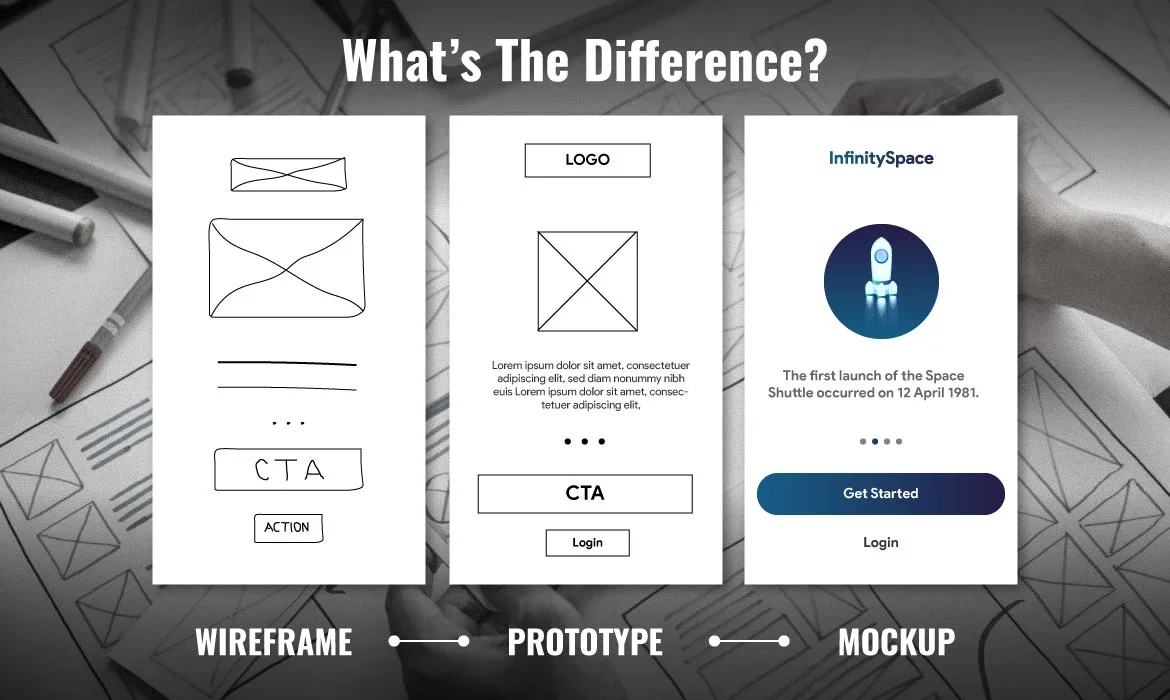
Wireframes are the primary visual interface that guides the structure of an interface and the connection between its pages. It could be thought of as the blueprint that determines the content, functionality, and page structure of a website.
Wireframes are created prior to the start of any design process. This puts the focus on the layout without the color and visual elements being a distraction. It helps to identify questions and new requirements that may be overlooked by the design team.
Wireframes often evolve into the foundation of a product or system. A variety of software such as Photoshop, PowerPoint, and illustrator are employed in creating wireframes.
Wireframe includes important elements such as:
- Navigation
- Company logo
- Search function
- Content area sections
- User log-in area if required
3. Visual Design
Visual design is a branch/specialization under UI design. Prioritizing creativity is important. The best user interface designers are the most artistic and creative. They can take full advantage of design tools to bring to life concepts such as:
- Layout
- Typography
- Design Theory
- Image organization
It is important to note that visual design and graphic design are different. Although, know-how in graphics design proves useful in the design process of a product.
4. Prototyping
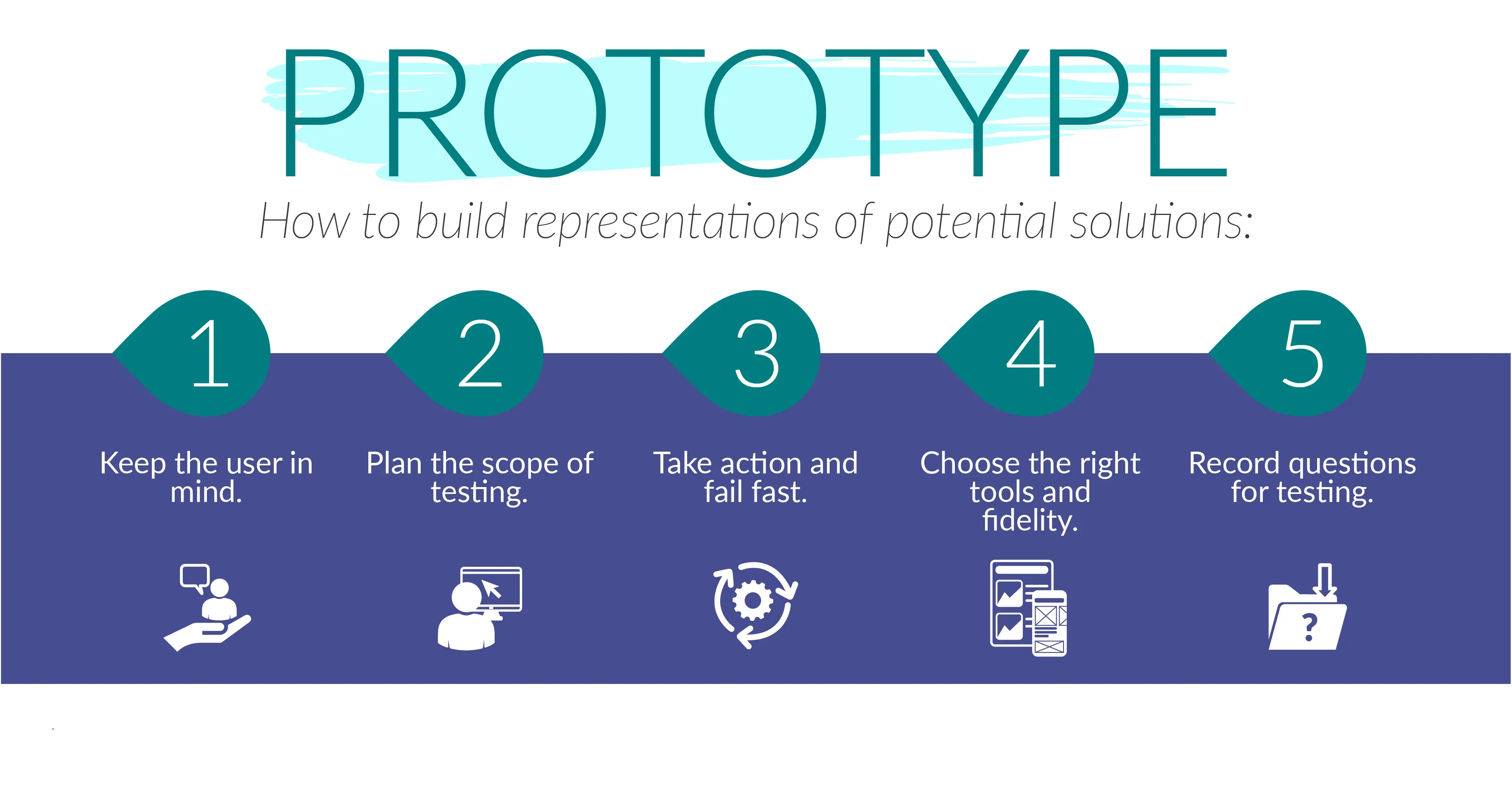
The meaning of prototype is simple - sample version. A chef working on a new recipe goes through stages of trials, errors, and testing before they are comfortable with placing the new dish on the menu. It's the same with any product you're trying to release to the public.
Prototyping is the preliminary stage where design templates or simulations of the user interface are created. It's a key design process in UI design before the final product can be validated. Prototypes can either be paper or digital prototypes. Prototyping tools like InVision, Adobe XD, and Webflow help in creating digital prototypes.
Paper prototypes are non-intensive and prioritize speed in putting out ideas and concepts. Design teams sketch rough drafts of the final product with core components. Digital prototyping can either be low or high-fidelity. The prototypes translate from paper to interactive testing.
5. Design System Optimization
An important responsibility of a UI designer is to perform design system optimization. Simply put, it involves making an already existing system or interface better. The focus of optimization is not only on improvement but also on delivering a personalized experience to the user.
Keeping in mind the general experience of a user, the UI designer should tailor the experience to the target audience. This is why user research is important because data and useful insights greatly improve the optimization process.
6. Utilizing User Flow Chart
In journeying through a product, each user has their unique interaction and activity. User flow chart leverages this uniqueness through diagrams (maps) that detail each user's journey from their point of first interaction till the moment they make their exit. By utilizing user flow charts, UI designers can answer questions that aid in the optimization of the product.
7. Graphics Design
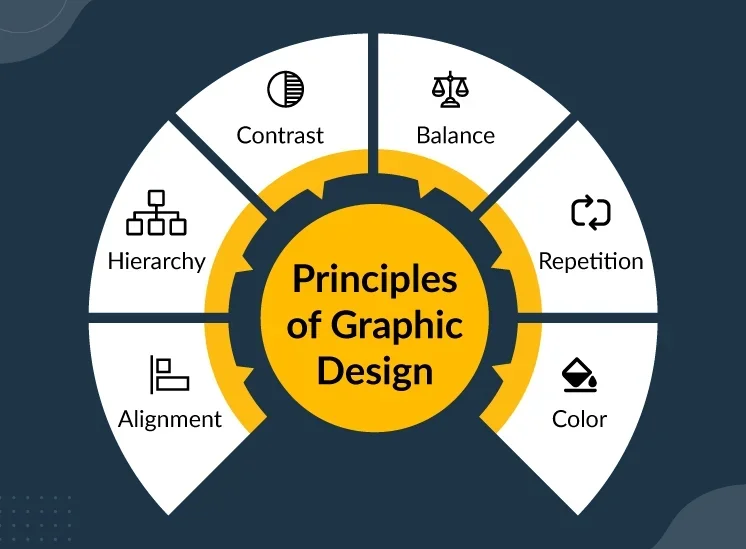
PBS Digital Studio In the intro to their documentary The Universal Arts of Graphic Design describes graphic design thusly:
“Though often overlooked, Graphic Design surrounds us: it is the signs we read, the products we buy, and the rooms we inhabit. Graphic designers find beauty within limitations, working towards the ultimate goal of visually communicating a message. Utilizing a language of type and imagery, graphic designers try to make every aspect of our lives, defined and beautiful."
Graphics design has gone beyond visually organizing a cluttered environment. It focuses also on the visual communicative fundamentals of art and design in combination with creative design thinking and problem-solving.
It deals with similar concepts in color, images, and texts and has evolved to include 3D animations and designs as well. Knowing both visual and graphics design sets apart a UI designer from the rest.
8. Responsive Web Design
Responsive web design takes into consideration how design and web development respond to the user's behavior and digital environment. Factors such as Platform, orientation, and screen size are important in successfully approaching responsive design.
People use their mobile devices more than any device to access the internet and digital space. Should companies suffer the risk of losing valuable customers because their websites are not compatible with mobile platforms?
It's therefore unavoidable that websites would need to be adapted for mobile platforms. Competent UI designers will be aware of practices such as CSS media queries, layouts, flexible grids, and images as core aspects of responsive web design.
The application of responsive web design provides seamless switching of websites as a user moves from one platform to another. Image size and resolution will adjust to the user's preferences. This eliminates the need for the development and design of a website for each platform.
9. Android And iOS Design
The two biggest operating systems for mobile devices, with reach in other electronic devices like televisions, personal computers, cameras, etc. Knowledge of UI design for both platforms greatly boosts a UI designer's market value.
9.1 Android Design
Android is the staple operating system for many smartphones and tablets. Its Apache license has helped its worldwide adoption and given manufacturers the freedom to freely customize and modify it.
Its reach extends beyond smartphones and tablets and is used in televisions, cameras, and other electronic devices. When designing an Android interface, the UI designer must be apt at all three important aspects; the Home screen, all apps, and the recent screen.
9.2 iOS Design
Exclusive to the iPhone and other apple products, iOS serves as the operating system for millions of Apple products worldwide. An understanding of the fundamental device features such as the display size and resolutions, ergonomics, etc helps iOS UI designers make important design decisions that give users a great experience.
5 Places To Look For User Interface Designer
Googling "User Interface designer for hire" will bring out numerous results that can overwhelm an individual who isn't proficient in recruitment techniques. Choosing from the right place can ensure you get the right professional based on competence, budget, and current need.
- Aloa
- Upwork
- Fiverr
- Behance
I. Aloa
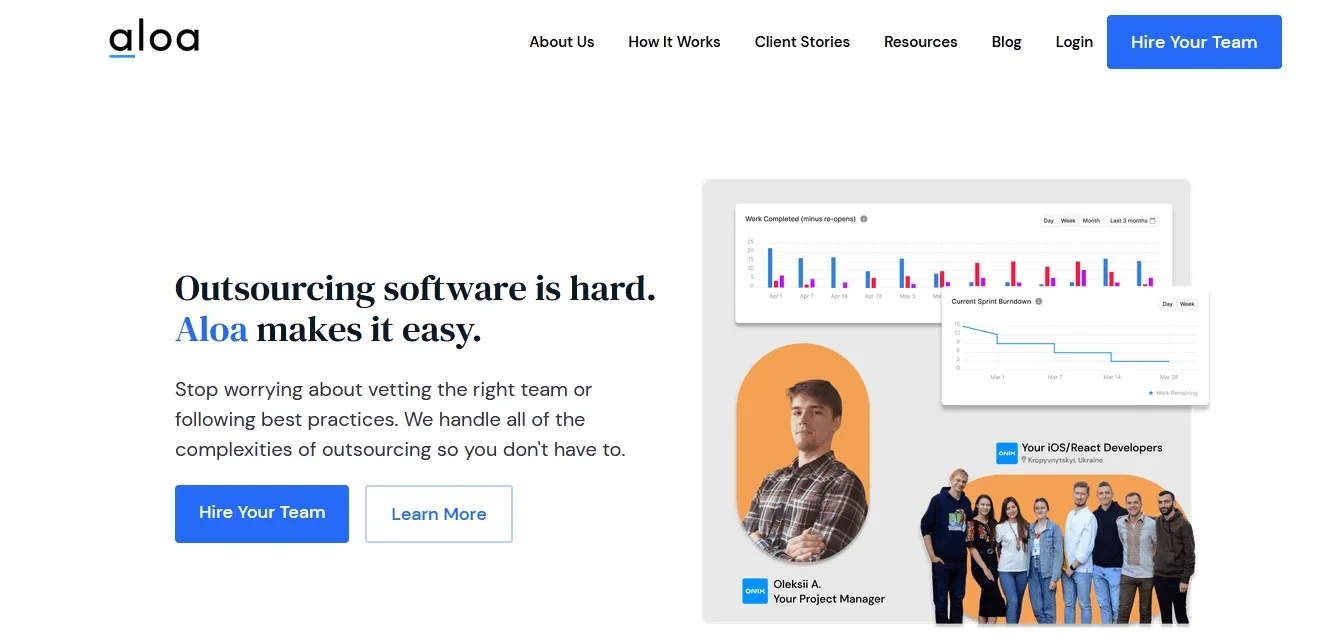
A dedicated software outsourcing agency, Aloa boasts the best practices in delegating projects to the right professionals and guarantees great outcomes for all stakeholders. We have a team of the best UI designers for all sorts of websites, web applications, and mobile apps, taking away the stress of quality assurance and effective communication on the part of the client.
Pros
- Outsourcing strategist to work with
- Biweekly audits. Frequent audits are possible on request
- Aloa doesn’t work with freelancers and employs full-time teams
- We imbibe a vigorous vetting process in the selection of UI designers we work with
- Custom-made project management platform to keep clients in the loop of everything
Cons
- Time zone differences for some clients may cause a few delays
II. Fiverr
Arguably the most popular freelance platform Fiverr was established with the focus of acquiring cheap labor. With more than 830,000 sellers, Fiverr is great for companies looking to outsource UI design projects or hire UI designers for one-time gigs.
Pros
- Multi-currency option
- Cost-effective solution
- Secure payment options are available
- A large pool of professionals to choose from
- Established platform with a resolution team to resolve conflicts
Cons
- Offers only fixed-price contracts
- Variability in the quality of work across the freelance pool irrespective of price
III. Upwork

Currently listed in TIME's 100 most influential companies of the year 2023, Upwork has served the work marketplace since its rebranding from Elance-oDesk in 2015. With over 20 years of experience, a database of over 12 million registered freelancers, and 5 million clients, Upwork is no stranger to pairing clients with professionals.
Upwork can be a great option to hire user interface designers since it takes a more corporate approach to the marketplace and puts its freelancers through a strict identification process.
Pros
- Active resolution team
- Cheap labor is available
- Secure payment options
- Responsive customer support
- Multiple UI designers with specialization in various aspects
- An advanced search system makes sorting through the pool of available freelancers an easier task
Cons
- Lack of control
- Language barriers may hamper the speed of the design process
IV. LinkedIn
The "white collar" website of social networks, LinkedIn is a professional networking and career development platform. It's also the biggest platform on the list with over 800 million registered users, hence making it one of the top options to hire a UI designer for your company. Although drawbacks with recruitment could be an issue for new businesses and startups.
Pros
- More targeted approach toward the hiring process
- A comprehensive platform to search for UI designers
- UI professionals with extensive work experience can be found
- Recruiting managers can easily access the profiles of UI designers
Cons
- Difficult to acquire cheap labor
- The recruitment process is more tasking
V. Behance
Acquired by Adobe in 2012, Behance is one of the largest platforms for digital designers and creatives. It serves as a design portfolio platform where UI designers can display their works with in-depth case studies.
Pros
- A specialized platform to hire UI designers
- A large number of designers to choose from
- Places an emphasis on case studies. This way, companies looking to hire can have an in-depth look at what a potential hire has to offer
Cons
- Relatively high-cost resources available
- The hiring process may be lengthy and difficult
Conclusion
A user interface designer brings your digital product to life. This is the part that grasps the attention of the audience in the first 30 secs or so. Hiring a user interface developer who is an expert in your project prototype can be complex. However, if you are clear about their roles and responsibilities, the hiring process is not an insurmountable obstacle.
We at Aloa are meticulous with putting designers and developers we work with through strict vetting processes, and can assist with providing both remote and in-house professionals to help your company achieve its design goals.
Our outsourcing strategists are available to advise you based on the current news of your business and the best hands to bring in at the moment. Contact us at [email protected] for further inquiries or visit our website to learn more.

